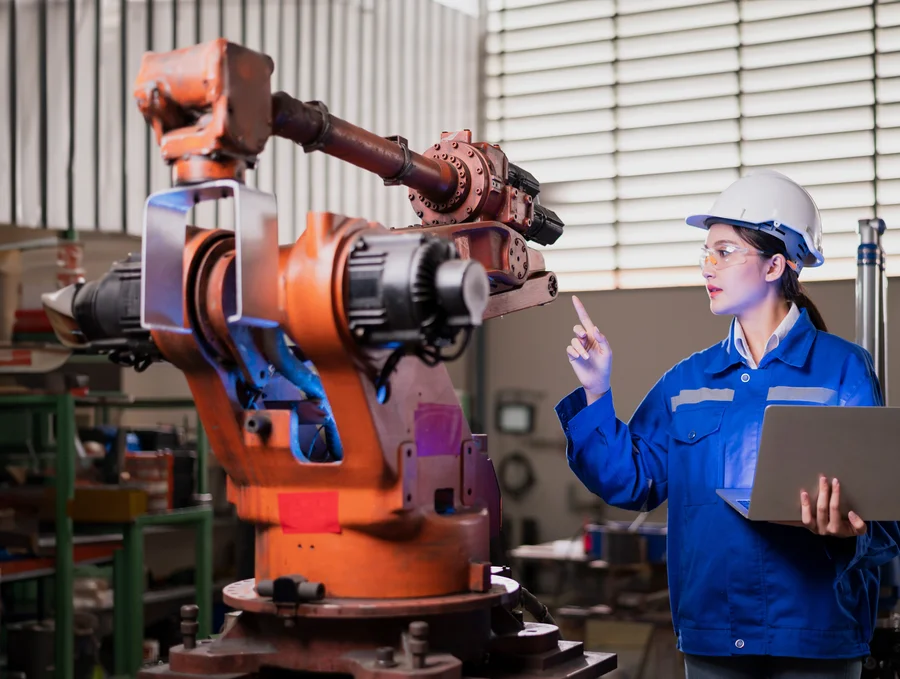Can the sovereign cloud become Oracle’s crowning glory?

Organisations in highly regulated industries, like the banking sector, are
also very interested in using sovereign clouds. They’ve already invested a
huge amount into their data centres, and they like the idea of perhaps running
Oracle Cloud Services alongside that. And they’ve got legacy systems to
consider, too. Look at Deutsche Bank. They continue to run a lot of their
applications in a standard way, but they’ve modernised their Oracle database
estate by using our Oracle Exadata Cloud@Customer offering. ... AI will be
another complicating factor. There’s a real desire among customers to make use
of AI technologies, but there’s a real nervousness about making sure that any
model is properly trained on the data contained within the company and not
unduly exposed to training material scraped from across the internet. That’s
why we recently announced a partnership with Nvidia. We’re not only harnessing
its GPUs within our network but doing so in a way that ensures that they’re
operated in a sovereign context. That really is an area that we’re ploughing
ahead with because we just think there’s a lot of demand for such an approach.
An AI tool for predicting protein shapes could be transformative for medicine
Proteins are essential parts of living organisms and take part in virtually
every process in cells. But their shapes are often complex, and they are
difficult to visualise. So being able to predict their 3D structures offers
windows into the processes inside living things, including humans. This
provides new opportunities for creating drugs to treat disease. This in turn
opens up new possibilities in what is called molecular medicine. This is where
scientists strive to identify the causes of disease at the molecular scale and
also develop treatments to correct them at the molecular level. The first
version of DeepMind’s AI tool was unveiled in 2018. The latest iteration,
released this year, is AlphaFold3. A worldwide competition to evaluate new
ways of predicting the structures of proteins, the Critical Assessment of
Structure Prediction (Casp) has been held biannually since 1994 In 2020, the
Casp competition got to test AlphaFold2 and was very impressed. Since then,
researchers eagerly anticipate each new incarnation of the algorithm.
AI training data has a price tag that only Big Tech can afford

“Overall, entities governing content that’s potentially useful for AI
development are incentivized to lock up their materials,” Lo said. “And as
access to data closes up, we’re basically blessing a few early movers on data
acquisition and pulling up the ladder so nobody else can get access to data to
catch up.” Indeed, where the race to scoop up more training data hasn’t led to
unethical (and perhaps even illegal) behavior like secretly aggregating
copyrighted content, it has rewarded tech giants with deep pockets to spend on
data licensing. Generative AI models such as OpenAI’s are trained mostly on
images, text, audio, videos and other data — some copyrighted — sourced from
public web pages. ... OpenAI has spent hundreds of millions of dollars
licensing content from news publishers, stock media libraries and more to
train its AI models — a budget far beyond that of most academic research
groups, nonprofits and startups. Meta has gone so far as to weigh acquiring
the publisher Simon & Schuster for the rights to e-book excerpts
Snowflake compromised? Attackers exploit stolen credentials
“Information about the incident and the group’s tactics is not yet fully
published, but from what we know, the group utilizes custom tools to find
Snowflake instances and employs credential stuffing techniques to gain
unauthorized access. Once access is obtained, they leverage built-in Snowflake
features to exfiltrate data to external locations, possibly using cloud
storage services.” Brad Jones, VP of Information Security and CISO at
Snowflake, says that they became aware of potentially unauthorized access to
certain customer accounts on May 23, 2024. “During our investigation, we
observed increased threat activity beginning mid-April 2024 from a subset of
IP addresses and suspicious clients we believe are related to unauthorized
access,” he added. “Research indicates that these types of attacks are
performed with our customers’ user credentials that were exposed through
unrelated cyber threat activity. To date, we do not believe this activity is
caused by any vulnerability, misconfiguration, or malicious activity within
the Snowflake product.”
GoFr: A Go Framework To Power Scalable and Observable Apps

When an application encounters such an error (typically due to temporary
network glitches or database timeouts), instead of immediately giving up and
returning an error to the user, the retry pattern involves automatically
retrying the operation after a short delay. This delay can be fixed or
exponential, meaning that subsequent retries occur after increasing intervals.
But sometimes relentless retries exacerbate the problem, leading to potential
service degradation and even unintentional denial-of-service attacks. To
address this challenge, GoFr integrates the circuit breaker pattern, a robust
defense mechanism designed to prevent futile operations and mitigate the
impact of non-transient faults. The circuit breaker pattern complements the
retry pattern by focusing on recognizing and handling scenarios where repeated
attempts at an operation are unlikely to succeed. Rather than persistently
retrying, the circuit breaker pattern aims to safeguard the system by
temporarily halting further attempts upon detecting a certain threshold of
failures.
Digital transformation: AI — Executive Insights
The public’s understanding of AI has gained ground since ChatGPT’s 2022
launch, which took a staggeringly short five days to reach 1 million daily
users. But Bhasin says the term “artificial intelligence” doesn’t necessarily
capture the technology’s true value. “How we think about AI is less about
being artificial intelligence and more about being augmented intelligence,”
Bhasin says. Humans generally listen well and empathize. Computers are good at
doing repetitive things again and again. AI’s value is in augmenting the work
that a caring human can provide. “It’s mixing the power of the human being and
the augmented intelligence, and how it comes together to serve a client’s
needs and serve a business need,” Bhasin says. “That’s a great way to think
about how to deploy these technologies.” Bhasin pointed out that Bank of
America’s Erica AI tool was released more than five years ago. The tool was
built in-house. “We’ve been doing this for a long time,” Bhasin says. “We know
how to do this, and we know how to do it at scale.”
The CFO Renaissance: what the rebirth of the role means for businesses

Modern CFOs are also expected to be proficient with emerging technologies such
as AI, machine learning and blockchain, which all help to automate routine
financial tasks, enhance accuracy and enable more sophisticated financial
modelling. It’s a full plate but Pleo’s ambition is to ensure that CFOs have
the means to execute their new responsibilities effectively and are finally
able step out of the back office to occupy a key role in strategic decision
making. Today, Pleo is Europe’s leading spend-management solution, enabling
33,000 companies across Europe to run their finances efficiently and in doing
so, promote business success without compromising on control, transparency or
financial safety. With its forward-thinking solutions, Moylan says Pleo can
play an important role in “enabling CFOs to add value in other areas. ...”
Integrating solutions like Pleo across an organisation can have compounding
benefits, believes Moylan, including helping to connect critical areas and
“ensure the accounting system talks to the payroll system, the expense
management system and the tax authority – all of which is critical to
effective decision making”.
Security-as-Code: A Key Building Block for DevSecOps
Security-as-Code is a foundational building block of DevSecOps. SaC provides
the automation, consistency and reliability of ensuring security in the
DevSecOps ecosystem. It treats every security measure as code artifacts that
are version-controlled, tested and deployed alongside the actual software. ...
SaC allows security controls and checks to be integrated into the development
pipeline, enabling early detection of security vulnerabilities and issues. By
identifying and addressing security issues during the development process,
organizations can reduce the likelihood of security breaches and minimize the
associated risks. ... SaC promotes consistency and standardization in security
configurations and practices across development, testing and production
environments. By defining security measures as code artifacts, organizations
can ensure that security policies are uniformly applied and enforced
throughout the software development lifecycle. ... SaC automates security
processes, such as vulnerability scanning, compliance checks, and
configuration management, leading to increased agility and efficiency.
Robotics Reshaping Manufacturing and the Future of Work

The growing adoption of industrial robots is driven by a range of factors.
Advances in sensors, computing power and AI are making robots more capable,
flexible, and user-friendly. Labour shortages and rising wage costs in many
countries are also spurring companies to automate more tasks, while the
COVID-19 pandemic highlighted the resilience and efficiency benefits of
robotic systems, accelerating automation plans in numerous industries. Recent
advances in deep learning algorithms have also allowed robots to perform more
complex tasks, with increasing numbers of industry leaders now predicting that
the robotics industry is set to dramatically accelerate. “We have many
partners developing applications using AI to allow our robots to perform more
complex and diverse functions,” comments Anders Billesø Beck, Vice President
of Strategy and Innovation at Universal Robots. “For example, AI allows robots
to have human-like perception, handle variation, move parts precisely, adapt
to changing environments, and learn from their own experience.
How Software Architecture Choices Impact Application Scalability, Resiliency and Engineering Velocity
As organizations grapple with how to tackle ATD and balance the trade-offs
between architectures, the pivotal role of software architects becomes
evident. However, the survey reveals a disconnect between architects, who are
responsible for the long-term integrity of system architecture, and the modern
DevOps processes that drive iterative software delivery. While C-suite leaders
rank the enterprise architect as primarily responsible for addressing ATD
within their organizations, engineering teams placed architects much lower on
that list, below directors and engineering leadership. This fundamental lack
of clarity around roles and responsibilities highlights the complexity of the
issue within enterprises. ... To confront the mounting ATD crisis,
organizations are turning to architectural observability. After being
presented with a definition of architectural observability as "the ability to
analyze applications statically and dynamically to understand their
architecture, detect drift, and find/fix architectural debt", an overwhelming
80% of respondents acknowledged that having these capabilities would be
extremely or very valuable within their organizations.
Quote for the day:
"The art of leadership is saying no,
not yes. It is very easy to say yes." -- Tony Blair
No comments:
Post a Comment